In 2020, Xiaomi took us on a journey of nearly four years with its first imaging flagship, Xiaomi 10 Ultra Commemorative Edition. The collaboration with Leica significantly improved mobile imaging. Just after the New Year of 2024, Xiaomi introduced the 14 Ultra, marking its third imaging flagship phone post-Leica collaboration. The Xiaomi 14 Ultra retains features from previous Ultra models, such as four cameras with full focal length, an ultra-large bottom camera, dragon crystal glass, a ceramic and plain leather body, and a four-curved screen with equal depth.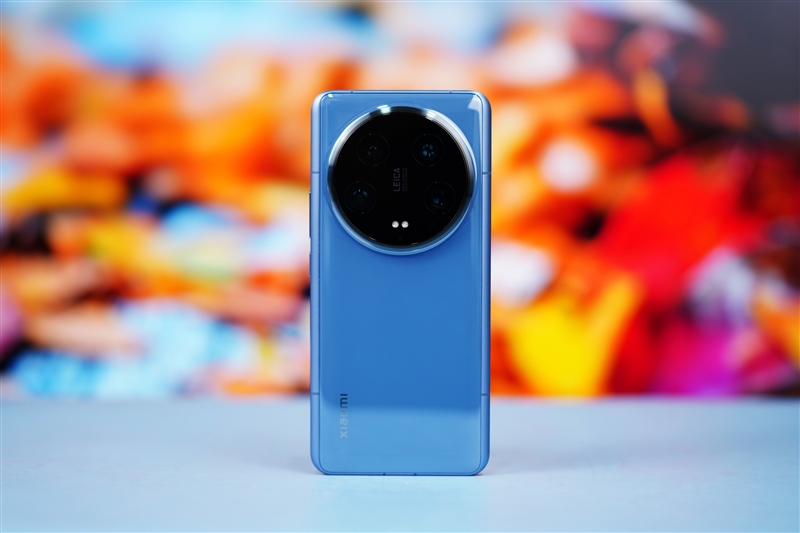
To tap into the high-end market, Xiaomi incorporated the latest technological advancements in the 2024 ultra-large imaging flagship, Xiaomi 14 Ultra. These include a new generation of over-one-inch cameras, satellite communications, self-developed Jinshajiang batteries, the world’s first 80W wireless fast charging, and the first integrated AI large model calculation photography platform.
Key features:
- The Xiaomi 14 Ultra series debuts Sony’s next-generation super one-inch outsole CMOS-LYT900, introducing the stepless (1024-level) variable aperture from the Xiaomi Mi 14 Pro, forming Xiaomi’s most powerful main camera to date.
- The 120mm periscope telephoto lens on the Xiaomi Mi 14 Ultra boasts the largest f/2.5 aperture in the mobile optics field, offering twice the equivalent light intake of the iPhone.
- Xiaomi Mi 14 Ultra becomes Xiaomi’s first mobile phone supporting satellite communication. Dual Thermal T1 communication chips enhance signal modulation, ensuring a sense of security in extremely remote areas or emergencies.
- Xiaomi Mi 14 Ultra features the self-developed Jinshajiang battery with the highest energy density in the industry. Despite an 8% reduction in size to accommodate the large lens module, the battery’s capacity is 5300mAh with a density of 779Wh/L.
- Xiaomi 14 Ultra introduces the world’s first 80W Pengpai wireless instant charging, making it the flagship mobile phone with the highest wireless charging power to date. High-power wireless fast charging is achievable when paired with Xiaomi’s 80W wireless charging stand.
Design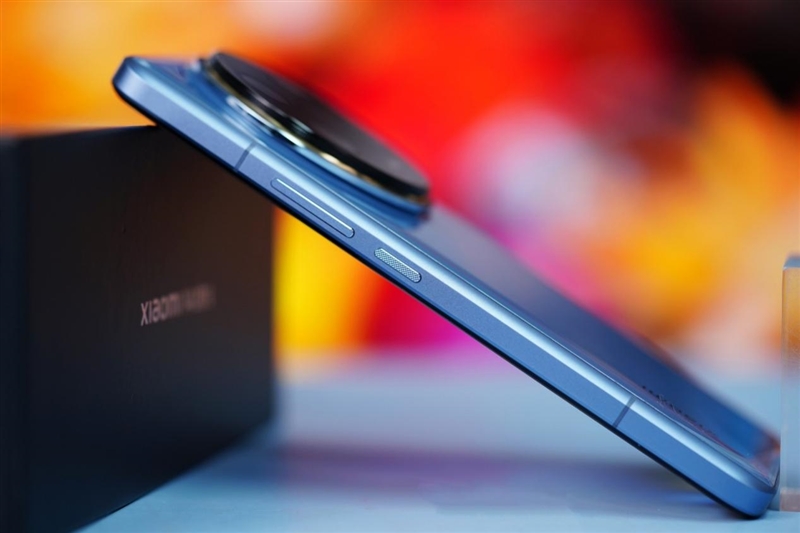
Xiaomi 14 Ultra embraces the Xiaomi Dragon Armor architecture, featuring a Unibody integrated body and a robust 6M42 aluminum alloy middle frame, ensuring exceptional strength and hardness. Moreover, this aluminum alloy is twice as hard as the Xiaomi 14 Pro and even surpasses the titanium alloy middle frame of the iPhone 15 Pro Max.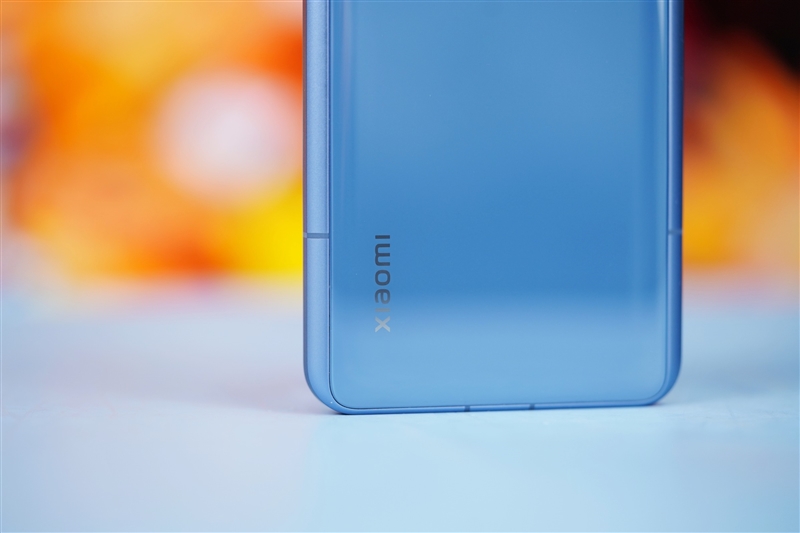
The Xiaomi 14 Ultra introduces a ceramic body using Xiaomi Dragon Crystal ceramic. This ceramic is 50% lighter and stronger than traditional ceramics, showcasing impressive wear resistance. Moving to the rear, the 14 Ultra boasts four massive 50-megapixel lenses arranged symmetrically, similar to the previous generation 13 Ultra. The Leica logo and camera parameters are centered, with two single-color temperature LED fill lights below. The flash is accompanied by a laser focus sensor on the left and an infrared remote control sensor on the right, complemented by a noise reduction microphone below.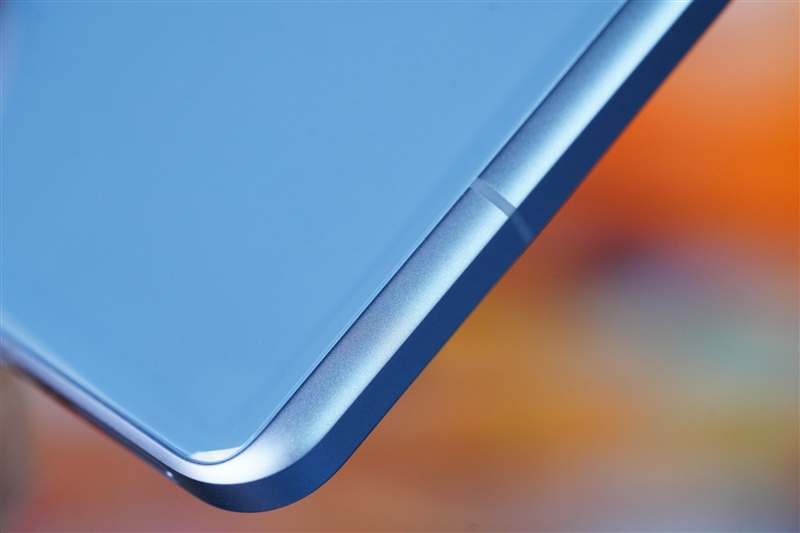
On the front, the Xiaomi 14 Ultra features a 6.7-inch C8 screen jointly developed with CSOT, achieving a peak brightness of 3000nit, an industry record. After professional primary color calibration, it addresses the yellowish cast issue of OLED screens. Additionally, this screen employs an LTPO substrate, supporting a 1-120Hz adaptive refresh rate.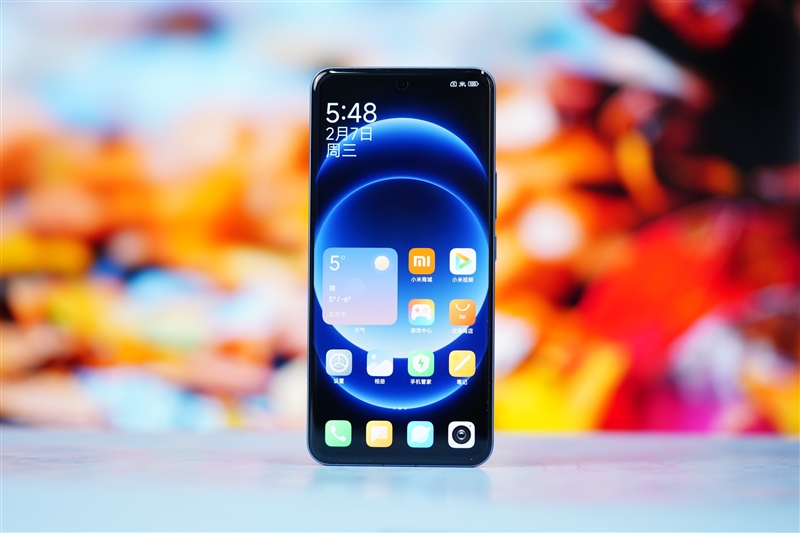
Continuing the four-curved screen design of the Xiaomi Mi 14 series, the screen’s corners and sides share the same curvature, providing both the visual impression of a straight screen and the tactile sensation of a curved screen. The surface is protected by Xiaomi’s Dragon Crystal glass, enhancing drop resistance by 10 times compared to the previous generation.
Examining the pixel arrangement, the Xiaomi 14 Ultra employs CSOT Pearl 2.0 arrangement, featuring a 6.7-inch 2K+ (3200×1400 resolution) screen with a standard PPI of 522 and an equivalent PPI of approximately 417.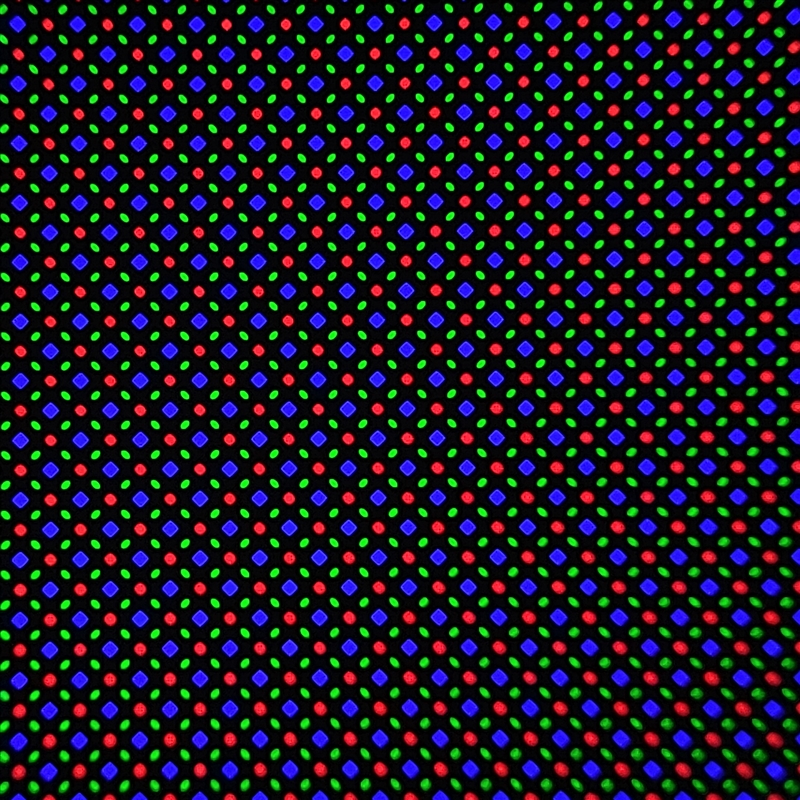
The top and bottom of the phone feature independent speaker openings, replacing the infrared remote control opening with the camera module on the back. The bottom integrates a Type-C and headphone two-in-one interface, a microphone, and a SIM card slot. Situated on the right side of the device, the power button and volume button offer a textured design for easy blind operation.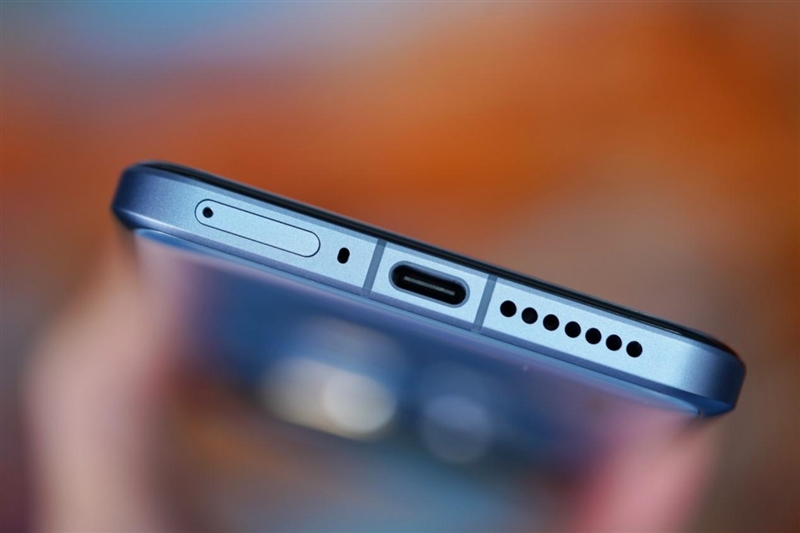
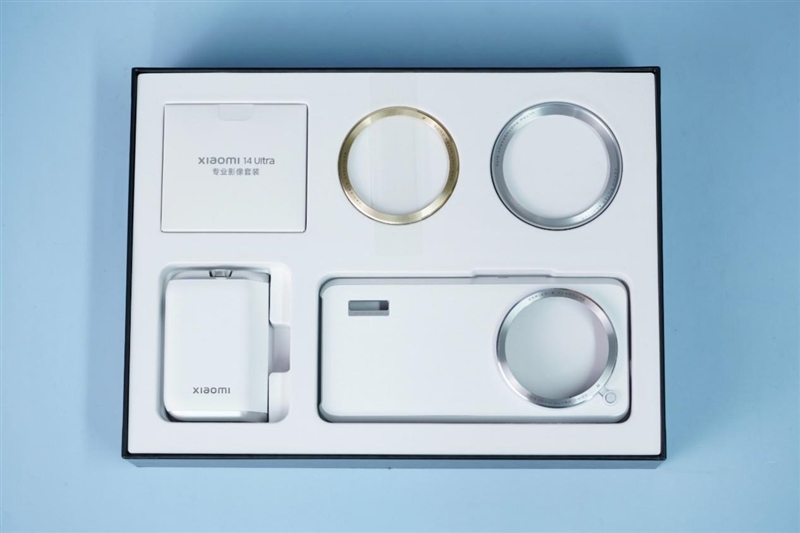
Introducing a new professional photography package, the Xiaomi 14 Ultra includes a detachable camera handle and a photography-specific protective case with a built-in 1500mAh battery. Connected through the Type-C interface, it eliminates the need for pairing and simplifies power management, providing extra power for the phone. Above the handle, a zoom lever is integrated, accompanied by a customizable independent dial and button for enhanced functionality.
Cameras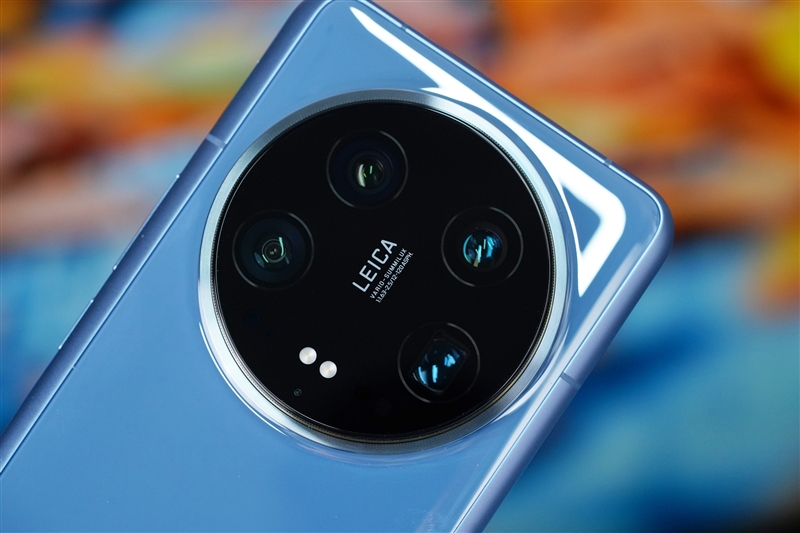
The Xiaomi Mi 14 Ultra, as a flagship in imaging, has undergone significant upgrades. Firstly, the series introduces Sony’s LYT-900 super one-inch outsole CMOS in its debut, featuring a 1.6μm single pixel area, 50MP effective pixels, default 12.5 Megapixel output, and an 8P aspherical lens with a 23mm equivalent focal length, supporting OIS optical image stabilization.
The Xiaomi Mi 14 Ultra incorporates the stepless variable aperture, initially launched on the Xiaomi Mi 14 Pro, and builds upon this foundation. The main camera lens now boasts an unprecedented f/1.63 aperture, allowing a seamless switch from f/1.63 to f/4.0 in the default shooting interface. This aperture control enhances exposure management and improves close-up shot resolution.
Moving on to the secondary upgrades, the ultra-wide-angle, upright telephoto, and periscope telephoto CMOS of the Xiaomi Mi 14 Ultra remain unchanged in terms of hardware. However, the upright telephoto now offers a 3.2x pure optical zoom, and the periscope telephoto has an industry-leading f/2.5 aperture, enabling a 5x optical zoom. These changes promise a significant enhancement in the image quality of the dual telephoto setup.
Additionally, the periscope telephoto lens supports 5x optical zoom at a 120mm equivalent focal length, with the capability to perform 10x lossless optimization through Remosaic mode, reaching an equivalent 240mm. A 1x periscope telephoto lens with a floating focus lens group is added, providing super close-up capabilities with a minimum focusing distance of about 30cm.
Now, let’s explore the imaging capabilities of the Xiaomi 14 Ultra through actual sample photos taken with its four lenses.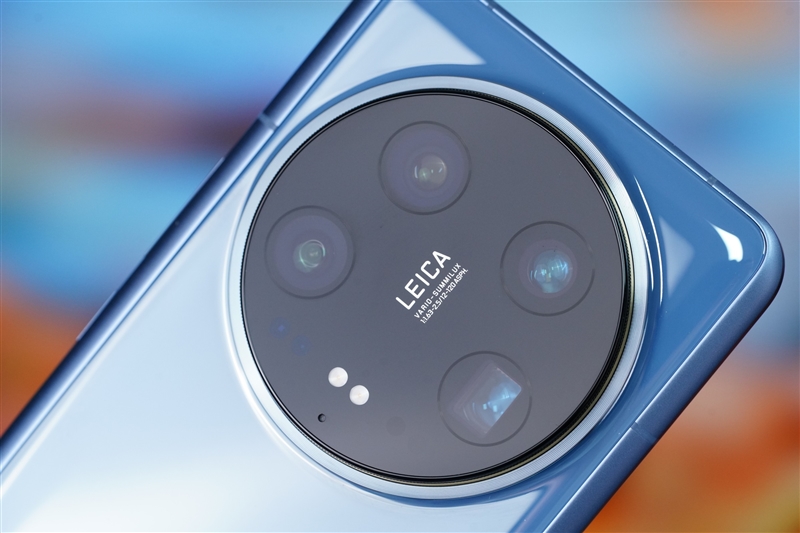
The main camera offers two styles: Leica Classic and Vivid. In Leica Classic mode, the picture appears natural and realistic with low color saturation and sharp contrast. On the other hand, Leica Vivid mode produces brighter and more transparent proofs, suitable for capturing vibrant colors in flowers and plants.
In outdoor environments, the Xiaomi Mi 14 Ultra excels in capturing mixed light with no astigmatism or glare. The blue sky appears pure, showcasing the device’s performance in high-contrast scenes. Indoors, the warm light presents realistic colors without excessive saturation, demonstrating the phone’s adaptability to different lighting conditions.
Moreover, the main camera’s stepless variable aperture adjusts automatically (F1.63~F4.0) based on shooting scenes, ensuring optimal photos in various environments.
Now, let’s delve into the specifics of each lens:

- 3.2x Upright Telephoto: The 3.2x upright telephoto lens, with an equivalent focal length of 75mm, exhibits transparency and brightness without whitening. The large f/1.8 aperture controls optical distortion and chromatic aberration, maintaining bright colors.
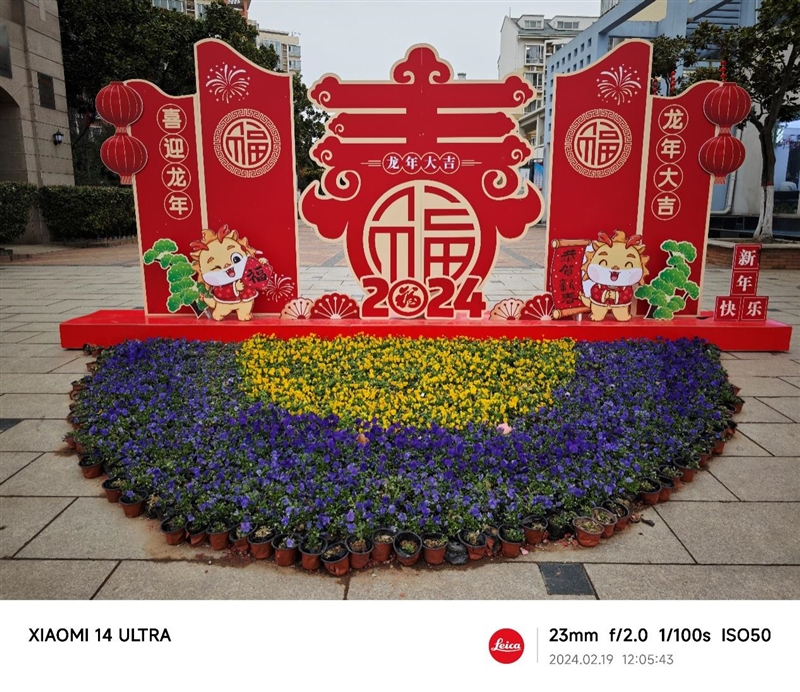
- 5x Periscope Telephoto: The Xiaomi Mi 14 Ultra’s periscope telephoto lens, boasting a 5x optical zoom and a large F2.5 aperture, offers excellent resolution comparable to the main camera. The addition of Remosaic mode enables 10x lossless optimization, ensuring clear details even at significant zoom levels.
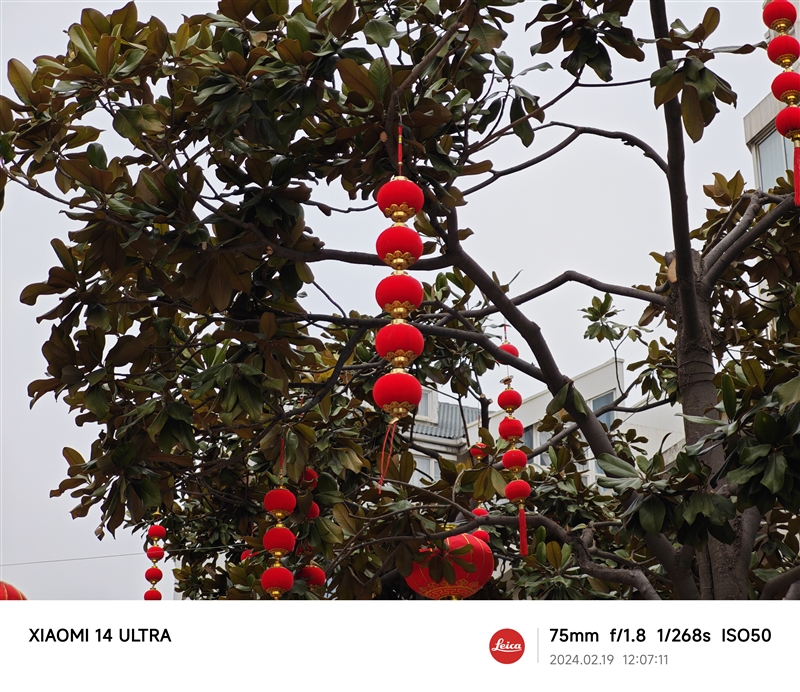
- Super Wide Angle: The ultra-wide-angle lens, with an industry-leading aperture of f/1.8, presents vivid and layered color expression with a dynamic range comparable to larger-soled wide-angle samples. The low-distortion design ensures high-edge imaging quality and strong anti-distortion ability.
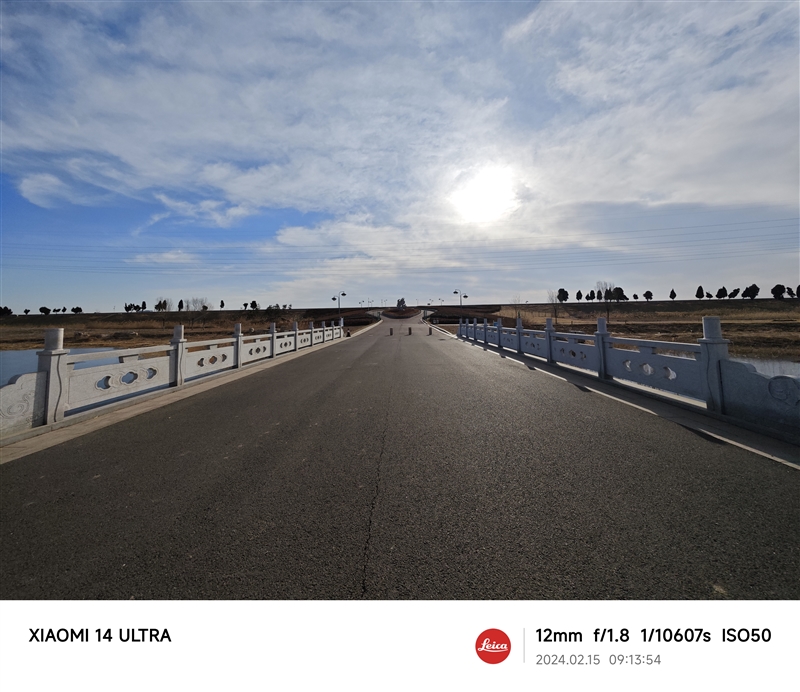
- Night View: In night scenes, the main camera accurately handles light and shadow balance, capturing pure Spring Festival red colors and expressing traditional elements. The upright telephoto lens displays high color accuracy and film yield, while the periscope telephoto excels with a 5x light variation advantage, eliminating halo and circle of confusion phenomena often seen in other phones.
Performance and Gaming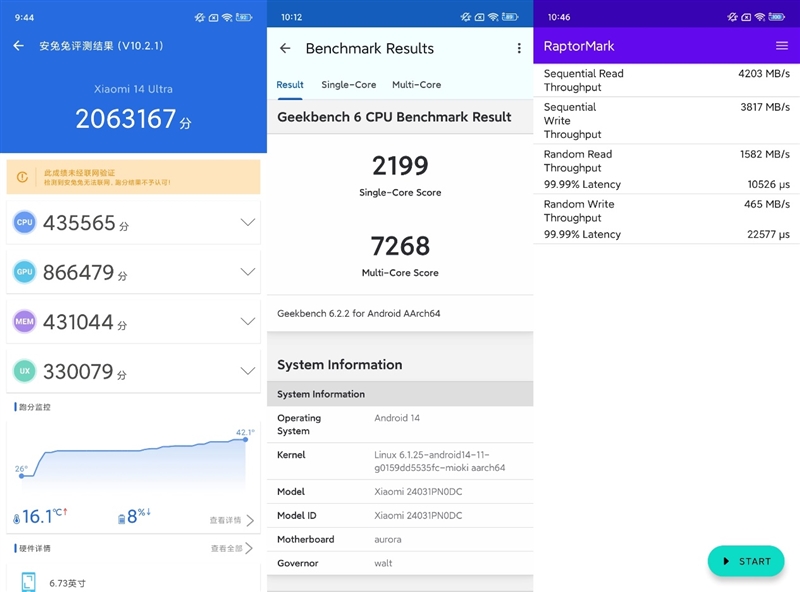
Xiaomi 14 Ultra packs the third-generation Snapdragon 8 mobile platform, coupled with LPDDR5X+UFS4.0 flash memory in the 16GB+1TB variant. Now, let’s delve into a series of theoretical running tests.
Firstly, with the performance mode engaged, we executed an AnTuTu comprehensive performance test in a 26-degree Celsius office setting. Memory expansion was disabled, and the phone brightness was set at 300nit with automatic brightness off for test objectivity.
The total AnTuTu score soared to 2.063 million+, a staggering 33.9% increase from the Xiaomi 13 Ultra’s second-generation Snapdragon 8, marking a notable performance boost.
Breaking it down, the CPU score saw a year-on-year surge of about 14.9%, reaching 435,600+, while the GPU score neared 867,000 points, showing a significant 46.4% year-on-year increase.
Moving on to the flash memory capabilities test, the Xiaomi Mi 14 Ultra impresses with a sequential read speed of 4203MB/s and a sequential write speed of 3817MB/s, placing it firmly at the UFS4.0 level.
Shifting gears to the gaming arena, we conducted tests on popular mobile games, including “Honor of Kings,” “Genshin Impact,” and “Honkai: Star Railroad.” The tests covered frame rate, power consumption, and temperature aspects, all conducted in a 26-degree Celsius office environment with a 300nit screen brightness and the game acceleration function activated.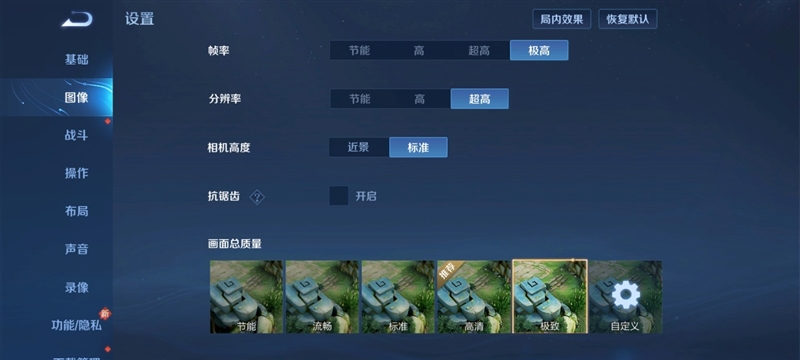
In “Honor of Kings,” the phone demonstrated exceptional stability with an average frame rate of 119.9FPS, low power consumption at 3.6W, and imperceptible temperature increases.
For “Genshin Impact,” the 15-minute running test showcased a stable average frame rate of 59.2FPS with minimal fluctuations. Notably, the device exhibited lower power consumption (4.676W) and superior energy efficiency (12.66FPS/W) compared to the previous Xiaomi 13 Ultra.
Lastly, in the test of “Honkai Impact: Star Dome Railway,” the average frame rate remained stable at 58.8FPS for the initial 7 minutes, showcasing impressive performance. However, the power consumption was relatively high at 6.53W, and the temperature, though noticeable, was manageable at 42.5 degrees Celsius on the front and 41.8 degrees Celsius on the back. Thanks to Xiaomi Mi 14 Ultra’s dual-circuit ring-type cold pump cooling module, the device effectively handles the heat generated by the extensive lens module.
Battery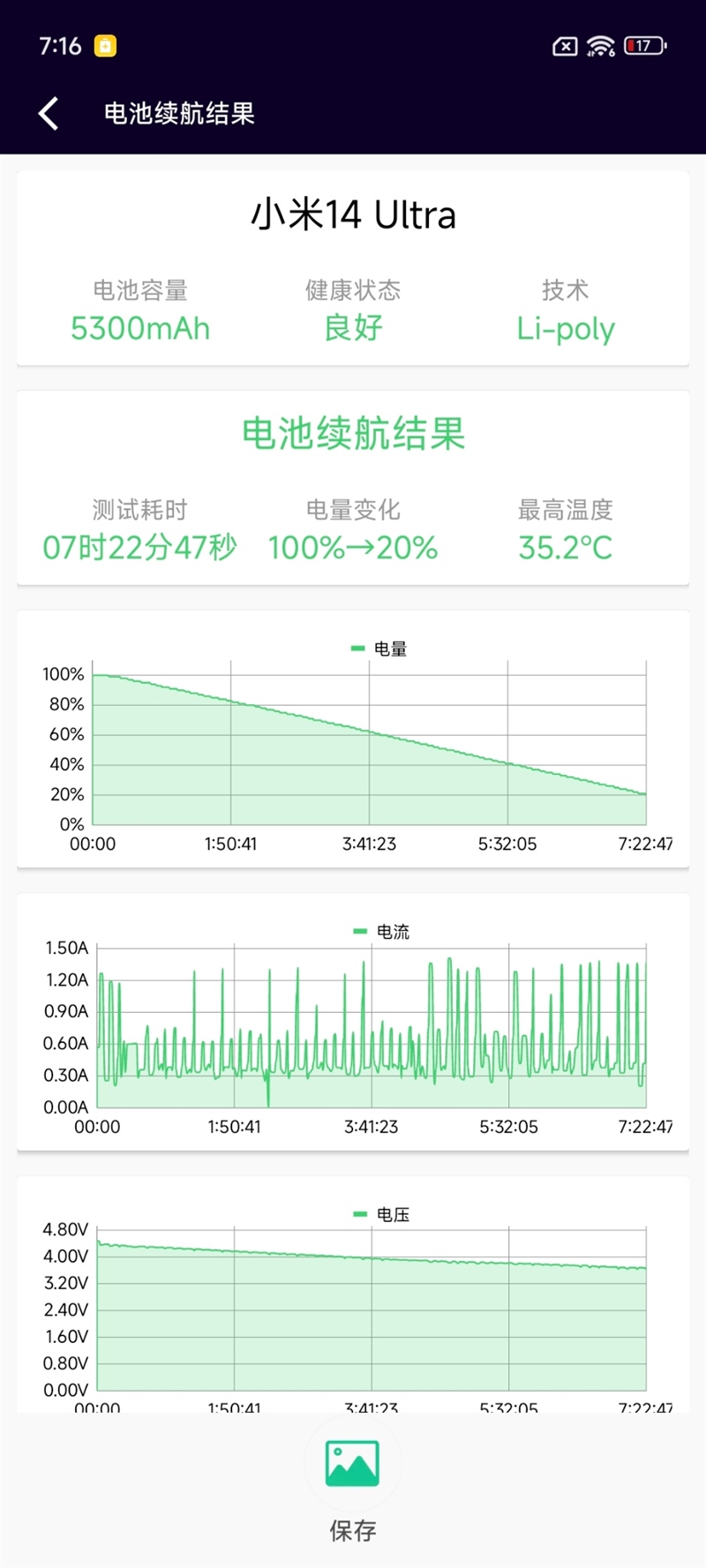
The Xiaomi Mi 14 Ultra’s battery has now incorporated its most advanced silicon anode technology. Despite being 8% smaller than the Xiaomi Mi 13 Ultra’s battery, it boasts an increased energy density of 779Wh/L, securing its top rank in the industry.
Due to this heightened battery density, the smaller size still manages to house a larger capacity of 5300mAh, all thanks to the Xiaomi Jinshajiang battery.
This particular battery stands out with an industry-leading 6% silicon content, providing 1.15 times the gram capacity of the carbon anode theoretical limit.
By incorporating film-forming materials into the electrolyte, the SEI film’s ductility is doubled. Notably, these materials can repair tiny cracks in the SEI film, ensuring the stability and safety of the battery.
Supported by various emerging technologies, the Xiaomi Jinshajiang battery sustains 80% capacity even after enduring 1,600 cycles.
To further enhance charging safety, endurance, and battery life, the Xiaomi Mi 14 Ultra comes equipped with the ThePaper P2 fast charging chip and ThePaper G1 battery management chip. The mobile phone supports 90W wired fast charging and has introduced the world’s first 80W wireless fast charging.
In our testing of the Xiaomi 14 Ultra’s charging capabilities: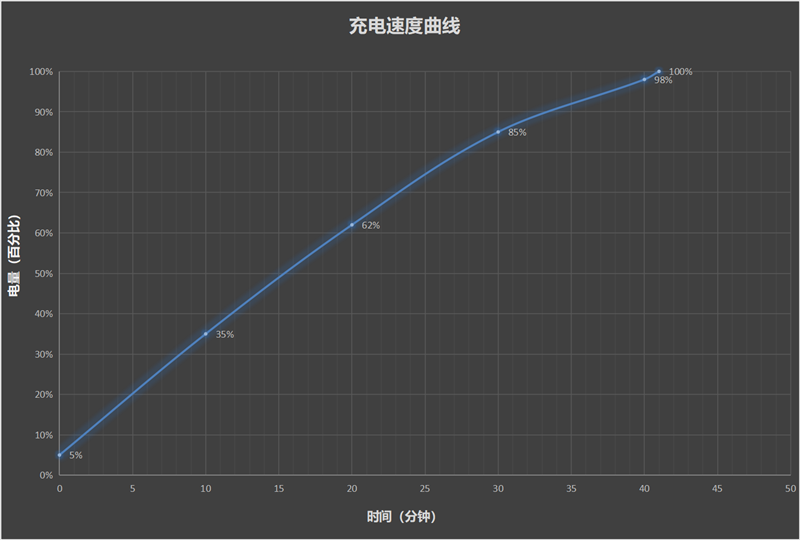
- It started charging from 5% and reached 35% in 10 minutes.
- Within 20 minutes, it charged up to 62%.
- After half an hour, it achieved an 85% charge.
- It completed a full charge in just 41 minutes.
Moving on to the endurance test, we utilized the Battery Dog, a professional battery life testing tool by Kuai Technology.
During the 20% power test, the tool assessed various scenarios, including CPU high voltage, CPU multi-threading, AI recognition, picture browsing, video playback, and web browsing. This comprehensive testing aimed to simulate user scenarios and replicate real-world power consumption.
Throughout the test, Battery Dog maintained environmental consistency by adjusting screen brightness to 50%, disabling automatic brightness, and setting the volume to 30%.
After rigorous testing, the Xiaomi 14 Ultra consumed power from 100% to 20% over 7 hours, 22 minutes, and 47 seconds, translating to an approximate full battery life of 8.5 hours. For regular users, this ensures a full day of intermittent use.
Satellite Communication Experience 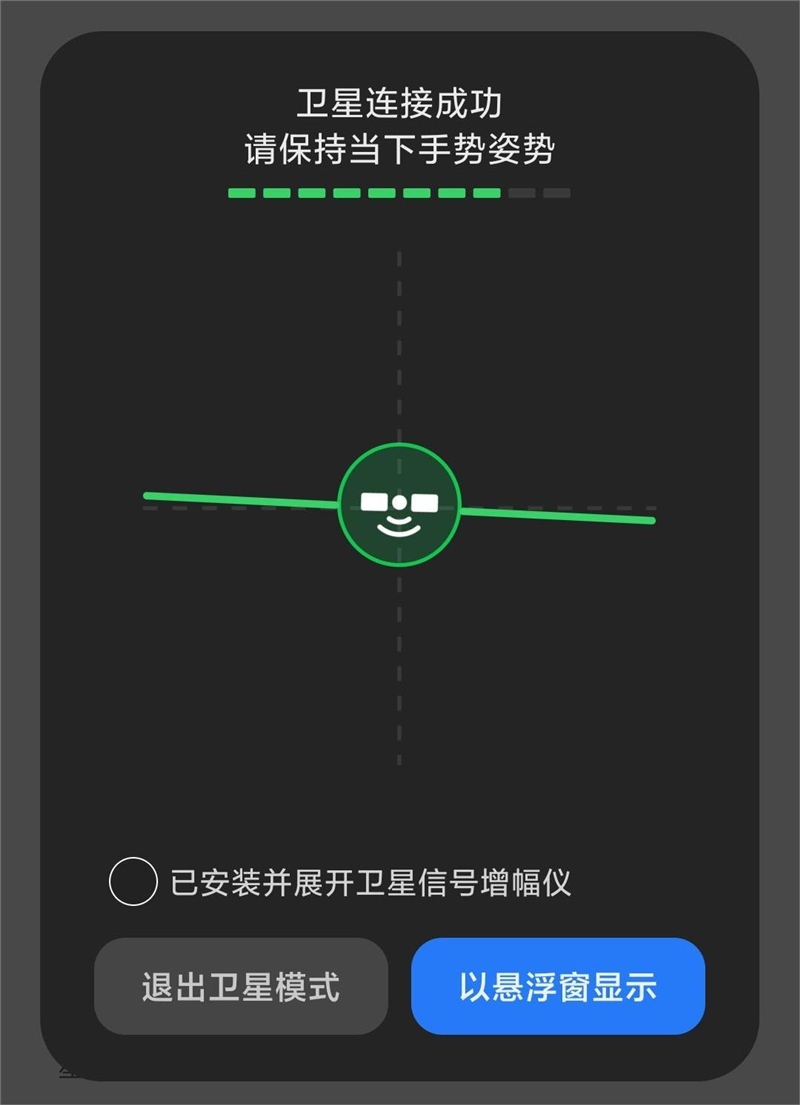
Xiaomi 14 Ultra introduces Tiantong satellite communication technology, incorporating a self-developed ThePaper T1 satellite version communication chip. This chip receives control signals from both satellite MODEM and Qualcomm MODEM, simultaneously managing the satellite antenna’s transition from linear to circular polarization. This switch significantly enhances overall performance.
Moreover, Tiantong-1, a dedicated communication satellite, serves various functions like satellite calls, making calls, sending text messages, and internet browsing, aligning closely with the daily communication needs of the general public.
To delve into Xiaomi 14 Ultra’s Tiantong satellite communication capabilities, it’s important to note that currently, this feature exclusively supports China Telecom users.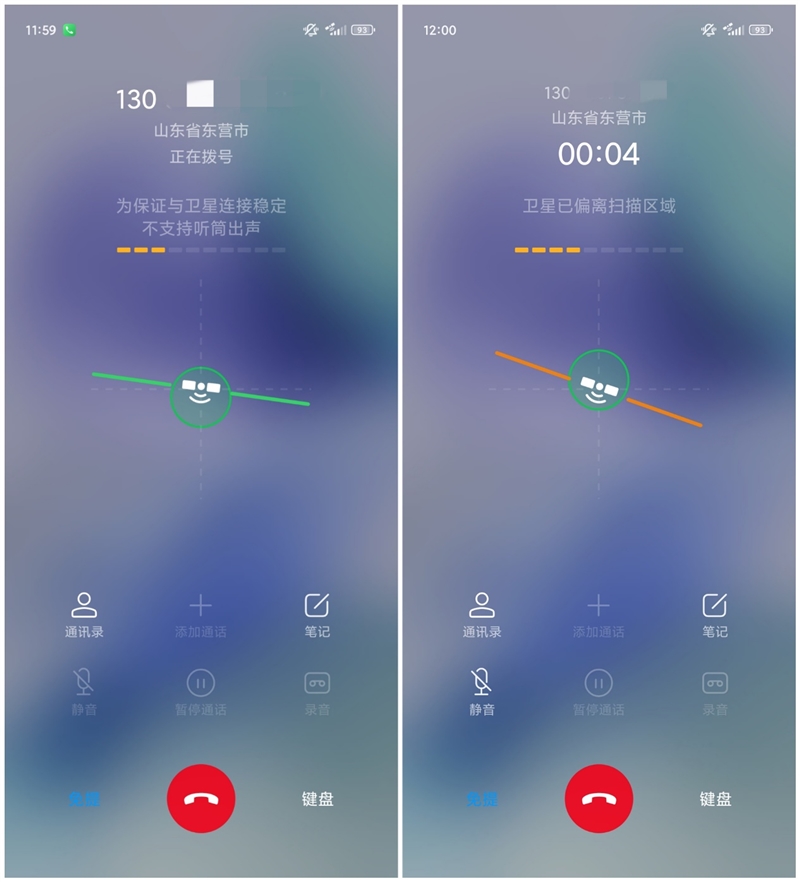
To enable Tiantong satellite communication, navigate to the mobile network option in the settings and activate the satellite communication feature. The phone then activates the positioning system to pinpoint its precise location for communication.
Once the Tiantong satellite communication is enabled, the phone seamlessly transitions to the star-searching and connecting interface. With the correct signal-receiving posture, the satellite search process concludes in a swift 2 to 3 seconds. The subsequent connection process, involving fine-tuning the phone’s position, takes approximately 25 to 30 seconds.
Remarkably, Xiaomi 14 Ultra’s Tiantong satellite communication function completes the entire satellite search and connection in just 45 seconds, outpacing the Huawei Mate 60 series and offering valuable time for emergency communications.
Upon successful satellite connection, the system prompts us to maintain the current status, allowing us to utilize the satellite for calls and text messages.
In the call interface, the phone automatically activates hands-free mode, providing clear audio even in areas with no signal coverage or poor signal quality. To optimize satellite signal reception, maintaining the ideal phone position is crucial during calls to avoid noise interference.
The Xiaomi 14 Ultra integrates the satellite connection window as a floating window, diverging from other phones that incorporate phone and text message functions directly into the satellite communication interface.
For satellite SMS, the Xiaomi Mi 14 Ultra allows users to customize text content and view the satellite signal status in a small conference window, guiding real-time adjustments for smooth communication. Additionally, users can choose to include their current location when sending texts, providing recipients with detailed location information.
In both satellite call and SMS interfaces, the mobile phone offers real-time guidance through small windows to ensure the best communication experience. The call quality, while not as clear as a SIM card, proves invaluable in areas with no signal or extremely poor coverage.
Verdict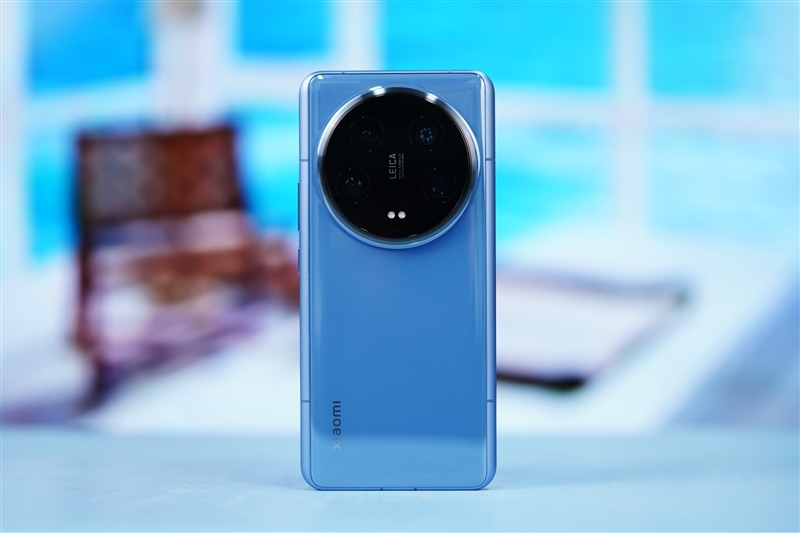
Since 2020, Xiaomi has significantly enhanced the competitiveness of its flagship mobile phones by continuously improving imaging technology. The Xiaomi Mi 10 Extreme Commemorative Edition led the way into the high-pixel periscope era, while the Xiaomi Mi 11 Ultra introduced the ultra-large bottom Samsung S5KGN2 camera, earning the title “Light of Android.” In a groundbreaking move, the Xiaomi Mi 12S Ultra collaborated with Leica, launching the SUMMICRON lens group. The Xiaomi Mi 13 Ultra marked a return to the full-focal-range quad camera and introduced a variable physical aperture structure.
The Xiaomi 14 Ultra now boasts the industry’s largest primary lens with the largest aperture ultra-wide angle, upright and periscope dual telephoto, full-focal-range high-pixel four-camera solution, the new Leica optical Summilux system, and the world’s first AI camera Xiaomi AISP. This computational photography platform signals a new direction in the imaging field, laying a solid foundation for Xiaomi’s future high-end imaging road.
In terms of the truly stepless variable aperture and the over-one-inch outsole main camera, the Xiaomi Mi 14 Ultra automatically adjusts the aperture size according to the light intensity, ensuring optimal shooting effects under varying conditions. Equipped with an ultra-one-inch outsole main camera, it enhances photosensitivity, capturing more light to improve dynamic range and expressiveness.
Measured results reveal a significant improvement in the Xiaomi 14 Ultra’s film production rate during both day and night. Whether capturing city night scenes or shooting in low-light indoor environments, it excels at capturing weak light and presenting stunning details.
Furthermore, the 120mm periscope telephoto lens with the largest aperture in history, paired with the 3.2x mid-range telephoto, provides the ability to take photos from both distances and nears. These telephoto lenses excel in capturing close-ups and extremely small details, satisfying the pursuit of details and stimulating curiosity about the microscopic world.
Notably, the Xiaomi 14 Ultra introduces satellite communication in the series. Utilizing self-developed chips, such as the Xiaomi Pengpai T1, enhances both cellular and WiFi signal strength, as well as satellite communication call quality and signal strength. This ensures quick and reliable communication in remote areas or during emergencies, emphasizing user safety.
The self-developed Jinshajiang battery, with an industry-leading energy density of 779Wh/L, along with the dragon crystal ceramic body, contributes to the phone’s enhanced power and reduced weight. With a 5300mAh large-capacity battery, the Xiaomi Mi 14 Ultra returns as a full-focus quad-camera flagship machine.
In terms of performance, the Xiaomi Mi 14 Ultra features the third-generation Snapdragon 8 Performance Audio-Technica, achieving a near-full frame rate of 58.8FPS in high-load games without performance degradation or excessive temperature. Xiaomi’s dual-circuit ring cold pump cooling technology ensures optimal performance.
Xiaomi’s journey to high-end products has evolved over the years, from self-developed chips to batteries and fast charging technology, and now collaborative efforts in screens, camera brands, self-developed batteries, glass, and communication chips. The Xiaomi Mi 14 Ultra is the culmination of more than a decade of research and development, showcasing Xiaomi’s maturity in crafting high-end flagship models.
With a comprehensive Ultra product concept, the Xiaomi Mi 14 Ultra not only solidifies Xiaomi’s position in the high-end smartphone market but also accelerates its impact on the high-end market. This concept, coupled with relentless research and development, positions Xiaomi as a key player in the future competition in the mobile high-end phone market. Independent research and development will continue to be crucial for Xiaomi to maintain a dominant position in the global mobile phone market.
Read Also: Xiaomi 14 Ultra Mobile Phone Official picture Announced

.jpg)







